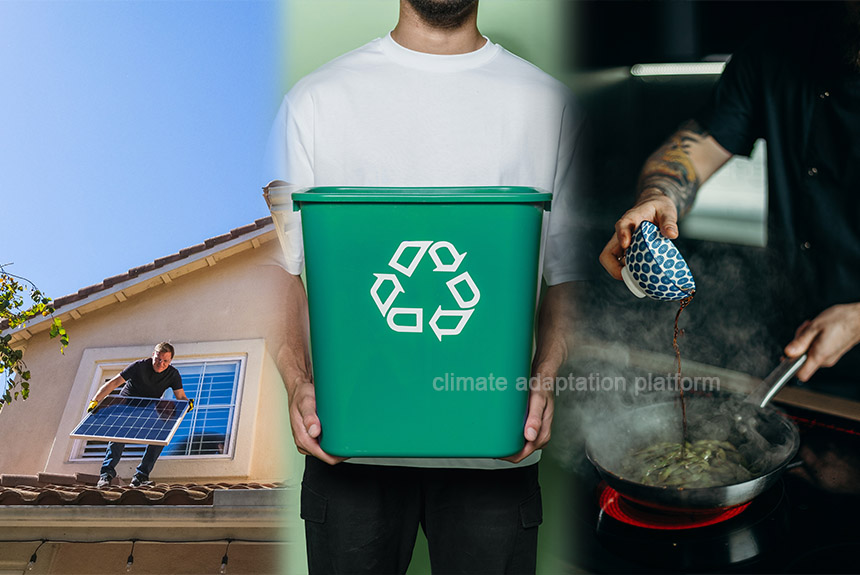Do our individual actions make a difference in stopping climate change, and what actions are most effective to reduce our carbon emissions?
The third part of the IPCC’s Sixth Assessment Report (AR6), its latest cycle of assessment report published in April 2022, provides a view of the different pathways for mitigating the effects of climate change.
The report emphasises the urgency to act by reducing our GHG emissions as the only way to limit global warming to 1.5 °C. Limiting global warming to 1.5°C means reducing our emissions by half by 2030 and reaching carbon neutrality by 2050.
Niklas Hagelberg, UNEP’s Climate Change Coordinator, says, “The climate emergency demands action from all of us. We need to get to net zero greenhouse gas emissions by 2050, and everyone has a role to play”.
“We, as individuals, must change our consumption habits and pressure those who represent us – our employers, our politicians – to move rapidly to a low-carbon world”, he adds (10 ways, 2022).
Individuals with high socioeconomic status have significantly higher emissions and have a greater emissions reduction potential. The IPCC AR6 Working Group III report notes that 10% of households have the highest per capita emissions.
The report’s press release says, “Having the right policies, infrastructure and technology in place to enable changes to our lifestyles and behaviour can result in a 40-70% reduction in greenhouse gas emissions by 2050. This offers significant untapped potential,” said IPCC Working Group III Co-Chair Priyadarshi Shukla. “The evidence also shows that these lifestyle changes can improve our health and wellbeing.”
So, what impactful behaviours or actions can reduce GHG emissions? These include shifting to sustainable healthy diets, reducing food waste, supporting products with a longer life span/repairable, teleworking, walking, cycling, car sharing, turning the heat down, etc.
A Washington Post article says that most Americans believe their actions can mitigate climate change. However, their answers show that they did not quite get it correctly. The Washington Post and the University of Maryland polls conducted between July 13 and 23, 2023, of 1,404 US adults revealed that Americans overestimated the power of recycling to combat climate change. Three-quarters of respondents also say not eating meat or dairy would have little or no effect on climate change.
Climate experts think Americans overrate recycling as a solution to climate change and get most of their answers wrong.
Polling result revealed the top individual climate mitigation actions that Americans feels are most effective in preventing climate change:
- First on the list, and the action that 62% of respondent deems effective in preventing climate change is installing solar panels;
- second, recycling (59%);
- third, driving an electric car (51%);
- fourth, taking fewer plane trips (48%);
- fifth, using a heat pump system for heating (40%);
- sixth, installing an electric stove instead of gas stove (34%);
- seventh, living in a smaller house or apartment (31%); and,
- at the bottom three answers, not eating meat (24%), driving slower (24%), and not eating dairy (22%).
According to experts, recycling, installing solar panels, using an electric stove and driving slower will not make much of a difference in reducing GHG emissions. Jonathan Foley, executive director of Project Drawdown, says these actions are not “really climate solutions”.
However, flying less and reducing or cutting out meat and dairy intake are the most impactful behavioural changes in mitigating climate change.
Other significant steps people can take to reduce their household carbon footprint involve switching to electric cars and using heat pumps.
UNEP also offers ten ways individuals can help fight the climate crisis, namely:
- Spreading the word about climate change by encouraging friends, family, and co-workers to reduce their carbon pollution;
- Lobbying local politicians and businesses to support efforts to cut emissions;
- Walking or cycling more, or carbon pool;
- Reining in your power use or install renewable energy sources;
- Eating more plant-based meals;
- Shopping local and buying sustainable;
- Not wasting food and compost if you can;
- Not buying lots of clothes and instead keeping current ones longer;
- Planting trees; and,
- Focusing on planet-friendly investments.
Sources:
Selig, K. & Guskin, E. (2023, August 28). You’re doing it wrong: Recycling and other myths about tackling climate change. The Washington Post. Retrieved from https://www.washingtonpost.com/climate-solutions/2023/08/28/climate-action-poll
Summary for Policymakers Headline Statements. (2022, April 4). IPCC Sixth Assessment Report. Retrieved from https://www.ipcc.ch/report/ar6/wg3/resources/spm-headline-statements/
10 ways you can help fight the climate crisis. (2022 May 4). UNEP. Retrieved from https://www.unep.org/news-and-stories/story/10-ways-you-can-help-fight-climate-crisis
The evidence is clear: the time for action is now. We can halve emissions by 2030. (2023). IPCC. Retrieved from https://www.ipcc.ch/2022/04/04/ipcc-ar6-wgiii-pressrelease/
Mitigating Climate Change: Solutions from the latest IPCC report. (2023, July 28). Surfrider Foundation. Retrieved from https://www.surfrider.eu/learn/news/mitigating-climate-change-solutions-from-the-latest-ipcc-report/



Leave a Reply